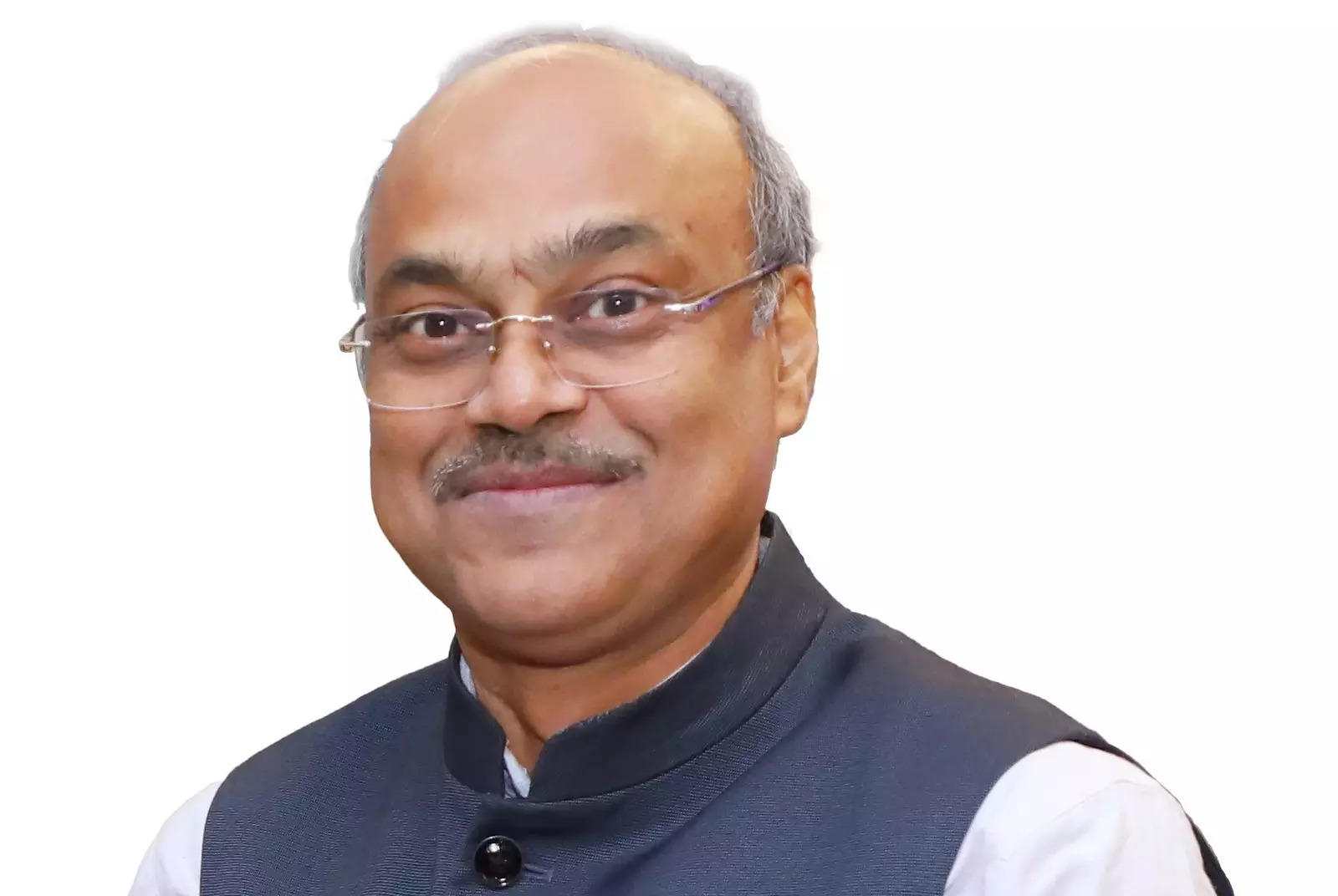
“We are striving to expand the range of services that we provide through the Common Service Centres. We are adopting AI to make service delivery more seamless and secure. The systems for banking and financial inclusion related services are being expanded through the banking correspondent networks and initiatives like DigiPay Sakhi. We are also strengthening our e-commerce and AgriTech platforms to connect rural producers with the national markets.”
This was stated by Sanjay Kumar Rakesh, Managing Director and Chief Executive Officer, CSC E-Governance Services India Ltd, Ministry of Electronics and Information Technology, Government of India, in conversation with Anoop Verma, Editor-News, ETGovernment. In the interview that follows, Sanjay Kumar Rakesh sheds light on the major initiatives and achievements of the CSCs in the country.
Edited excerpts:
How are CSCs supporting the fisheries sector through the National Fisheries Development Program (NFDP)?
The National Fisheries Development Program (NFDP) is a transformative initiative of the Department of Fisheries, Government of India. The aim of NFDP is to formalize the fisheries and aquaculture sector in India by developing an exhaustive database of the work-based identities of all the workers and stakeholders in the sector. The CSC SPV has designed and developed the NFDP portal. We are also involved in maintaining the portal and in mobilizing the beneficiaries and registering them in NFDP under various service modules for availing the benefits to which they are entitled. This is a very well conceived government scheme as it allows the relevant departments in the Central Government and in the State Governments to deliver benefits directly to the beneficiaries while also monitoring the impact of the various government schemes in the fisheries and aquaculture sector. This platform provides digital identity to fishers, women working in this sector, fish farmers, and support workers, helping them access government schemes and welfare programs. By visiting their nearest Common Service Center (CSC) and registering with NFDP, the workers and other stakeholders in the sector can obtain a digital identity and become eligible for financial and technical support from the government.Recently, CSC signed an MoU with IFFCO to empower FPOs and PACS with agricultural inputs. How will this initiative benefit farmers and rural entrepreneurs?
With IFFCO, CSC SPV has a long association. In fact, IFFCO is one of the shareholders of CSC SPV. The MoU between CSC and IFFCO ensures that Farmer Producer Organizations (FPOs) and Primary Agricultural Credit Societies (PACS) can easily access fertilizers, bio-nutrients, and other critical agricultural inputs. Through CSCs, farmers can now purchase quality IFFCO products at fair prices without intermediaries, improving productivity and reducing costs. Additionally, rural entrepreneurs running CSCs benefit by expanding their service offerings to the farming community.
The scheme for formation and promotion of 10,000 Farmer Producer Organizations (FPOs), was launched by the Government of India in 2020. The aim of the scheme is to empower farmers, reduce production costs, and enhance incomes by making better quality inputs available at cheaper prices and also through the aggregation of agricultural produce. Under this scheme, FPOs are being enhanced with the capability of CSCs. By leveraging the services of the CSCs and IFFCO, the small and marginal farmers associated with FPOs are deriving immense benefits. This is generating employment opportunities and improving the sustainability and financial viability of these PACS and FPOs and also the rural farmers.
The government of India has come up with a programme to set up close to 5000 Digital India Common Service Centers in rural areas. How is the mandate of these Digital India CSCs different from that of the traditional CSCs?
This is the phase two of the Common Service Centres. In the first phase, the focus was on ensuring that every panchayat and village in the country had a touchpoint, run by Village Level Entrepreneurs (VLEs), where citizens could come for availing various services. With the Digital India Common Service Centres (DI CSCs), the idea is to enhance the CSC framework with a new level of trust and technology. The idea is to have an integrated platform for providing essential e-governance services along with financial and commercial services to rural citizens.
The DI CSCs will offer a variety of services, including Aadhaar services, banking, financial planning, tele-law, telemedicine, education and e-commerce support. Equipped with high-speed broadband connectivity and modern infrastructure to function, the DI CSCs will facilitate transparent and sustainable delivery of critical digital services, which empower local entrepreneurs. A system of centralized technical monitoring is built into the operational structure of the DI CSCs to ensure that people are given the right advice and seamless services.
What initiatives have been most successful in empowering women through CSCs? How do you see the impact of the DigiPay Sakhi project?
In CSC SPV, about 80,000 of the Village Level Entrepreneurs (VLEs) are women. The female VLEs are among our top performers. In some cases, they are performing better than their male counterparts. To give one example, a female VLE, Ms Kiran Saini of Radhakishanpura Gram Panchayat in Rajasthan did such good work that the people of the Panchayat decided to make her sarpanch, unanimously. This is the kind of trust that the VLEs have earned in their local community.
DigiPay Sakhi is a transformative programme for helping women Self Help Groups (SHGs) provide banking services in rural areas. A part of the Digital India initiative, DigiPay Sakhi empowers rural women to become banking correspondents who provide doorstep banking and other financial services to the villagers. This not only generates employment for women but also ensures financial inclusion for citizens who lack access to banks or ATMs.
The SPARSH related Common Service Centers have been launched for providing dedicated support and services to defence pensioners and their families. How is this scheme working?
The System for Pension Administration Raksha (SPARSH) is an initiative of the Ministry of Defence to streamline pension related processes for defence pensioners, and address the critical need for accessible facilitation points for veterans and next of kin (NOK) across the country. All CSCs have been authorized to help these veterans and their NOKs in their pension matters. A number of Common Service Centres, managed by the Village Level Entrepreneurs selected from among the veterans or NOKs by the respective local military authorities, have also been established in various districts to provide SPARSH related services to retired defence personnel and the NOK.
What is the concept behind Model CSCs? How do you envision their role in enhancing digital services at the grassroots level?
Model CSCs are advanced digital service hubs equipped with high-speed internet, training centers, and expanded service portfolios, acting as one-stop solutions for governance, financial inclusion, utility bill payments, education, skill development, and healthcare. These centers serve as a benchmark for other CSCs and enhance the overall efficiency and impact of digital services in rural India.
How do you assess the socio-economic impact of CSC initiatives on rural communities?
There are a number of parameters that we use to judge the impact that the Common Service Centres are having across the country. The first such parameter is that of digital transactions and service penetration. We look at the number of people who are availing banking, education, and government services. Then there is the aspect of job creation at the local level. The CSC SPV is empowering the Village Level Entrepreneurs and women in rural areas.
We also look at the financial inclusion data–for instance, the increase in the number of bank accounts, insurance enrollments and pension scheme beneficiaries. It is well recognized that in the remote parts of the country, the CSCs have played a seminal role in transforming villages through telemedicine, consultations, banking services and skill training. Many VLEs have become successful rural entrepreneurs, bridging the digital divide.
In a year, about 50 crore transactions take place through 5.8 lakh VLEs spread across the length and breadth of the country out of which about 80,000 are women VLEs. Each VLE on an average employs at least 2 more persons at his kiosk. Thus, more than 12 lakh persons are provided employment within their locality through CSC network
As India moves towards achieving the vision of Viksit Bharat, how do you see the evolution of the CSC? What kind of transformations can we expect in the technology and services of the CSCs in the times to come?
We are continuously striving to expand the range of services that we are providing through the Common Service Centres. We are adopting AI to make service delivery more seamless and secure. The systems for banking and financial inclusion related services are being expanded through the banking correspondent networks and DigiPay Sakhi. We are also strengthening our e-commerce and AgriTech platforms for connecting the rural producers with the national markets. Telemedicine services are being constantly upgraded to provide better healthcare services in all parts of the country, especially to those who are living in remote areas where there is paucity of hospitals and doctors. We are also focusing on skill development to curb the problem of digital divide. The goal of the CSCs is to serve as the digital backbone of rural India and ensure that all citizens are able to access the benefits of the digital revolution.


